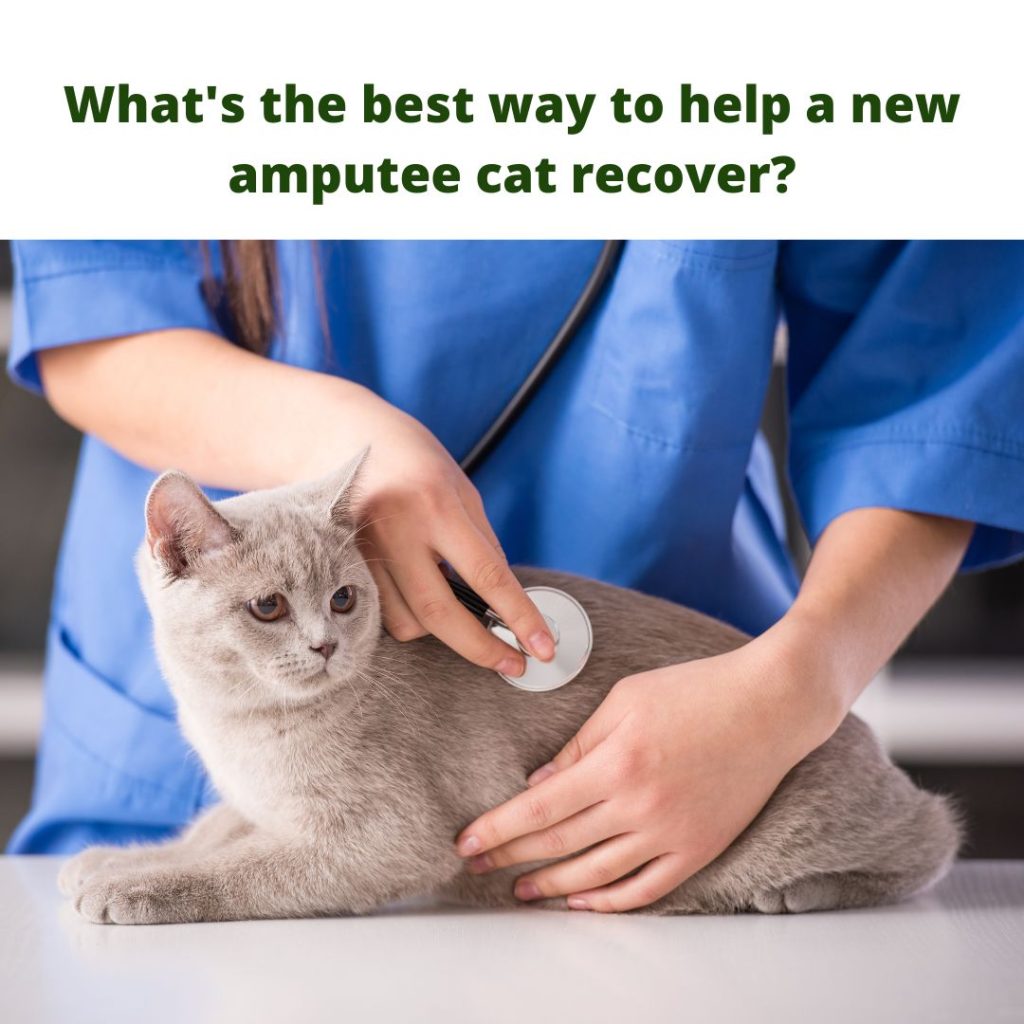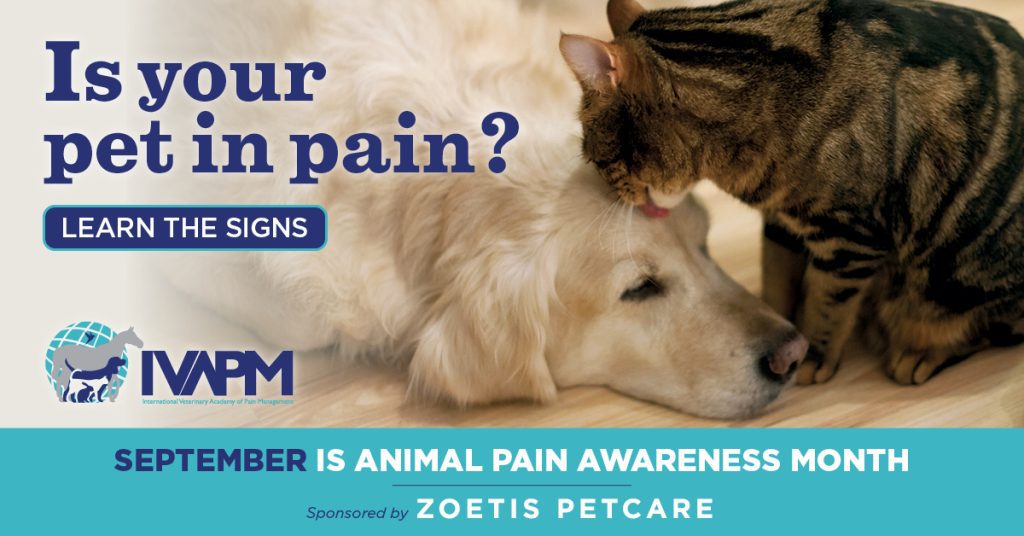Caring for a Three Legged Dog or Cat
Tripawds is your home to learn how to care for a three legged dog or cat, with answers about dog leg amputation, and cat amputation recovery from many years of member experiences.
Join The Tripawds Community
Learn how to help three legged dogs and cats in the forums below. Browse and search as a guest or register for free and get full member benefits:
Instant post approval.
Private messages to members.
Subscribe to favorite topics.
Live Chat and much more!
September is Animal Pain Awareness Month, which makes it the perfect time to discuss cat and dog amputation pain medications given to pet parents after surgery. Today we explore the latest thinking, with guidance from a leading vet surgeon, Dr. Stephen Jones of Bark City Veterinary Specialists in Park City, Utah.

Previously, Dr. Jones guided us through the latest thinking about whether a full or partial leg amputation is better for cats and dogs. He and other surgical colleagues covered this topic in a 2022 Clinician’s Brief paper about Canine Pelvic Limb Amputation.
Let's Talk About the Changes in Cat and Dog Amputation Pain Medications
Along with our discovery that a full hind leg amputation is best, we were surprised to learn from Dr. Jones that medication protocols for amputation recovery in dogs and cats is also evolving in two big ways.
Pet Amputation Pain Medication Change #1: Antibiotics after surgery are unnecessary
You might have heard about the problem with overuse of antibiotics for people and pets. Overuse of antibiotics can lead to major problems, like antibiotic resistance and MRSA, a potentially deadly bacterial skin infection. To keep antibiotics effective, many forward-thinking physicians and veterinarians are now cautious about prescribing antibiotics. Nowhere is this more evident than the Clinician’s Brief paper.
In the paper, Dr. Jones and his colleagues write that giving antibiotics at home after amputation surgery is not necessary. It states that “In most cases, unless there is noticeable pyoderma surrounding the incision site, antibiotics are not necessary postoperatively.”
Not giving antibiotics after a pet’s amputation surgery came as a shock to us. We wondered: don’t major procedures run the risk of infection? Is Dr. Jones and his team saying that pets don’t need antibiotics when they come home? Here’s what he told us:
Why Pets Usually Don’t Need Antibiotics After Amputation Surgery
World-wide, bacteria are developing resistance to antibiotics at an alarming rate. Judicious use of antibiotics is a very important role that veterinarians (and physicians) can play to help with reduce or slow this down.
For far too long antibiotics have been unnecessarily prescribed when they were not needed- in a range of different settings. This allows for bacteria to develop resistance to these antibiotics. In the absence of any other ongoing disease process or documented infection pre-operatively in the patient, there is no good medical reason to prescribe antibiotics for an amputation.
Dr. Stephen Jones, MVB, MS, DACVS-SA, DECVS (Diplomate, American College of Veterinary Surgery – Small Animal and Diplomate of the European College of Veterinary Surgery).
Woah! What a learning experience! We noticed that some pets were coming home from amputation surgery without antibiotics, and now we know why.
Pet Amputation Pain Medication Change #2: Pets Should Get 10-14 Days of Pain Control
In 2022, most Tripawds members come home with at least 10, sometimes 14 days worth of pain control. Sadly, many do not come home with more than 7 days of pain control. Oftentimes, cats get even less. What a relief to see that Dr. Jones’ and his colleagues specify the ideal range of days for post-amputation pain control:
Additional IV and oral analgesics should be administered during the postoperative period for 10 to 14 days depending on the patient’s comfort level.
If a Tripawd comes home with less pain medication, this might indicate that their veterinary practice is not up on the newest pain management guidelines. To help pet parents caught in this situation, we asked Dr. Jones for his perspective on how post-amputation pain in dogs and cats should be controlled.
The Best Pet Amputation Pain Management Medications in 2022
Here's what Dr. Jones told us about his favorite new protocols for cat and dog amputation patients.
Although all doctors have slightly different pain management protocols, there are many new medications that have recently become the gold-standard for post-operative pain control in our patients. Excitingly there are also new medications on the horizon that will further enable us to provide best post-operative pain control for our 4-legged friends.
Is Your Vet Providing Modern Pain Relief for Amputation Surgery?
Dr. Jones goes on to explain why the 3-day pain-relief medication called Nocita is so important.
For me, the biggest game-changer for pain control in post-operative patients in veterinary medicine in my lifetime is the availability of Nocita. This is a long-acting (72 hours) local anesthetic medication. It is FDA approved for use during stifle surgery in dogs.
This has dramatically changed the comfort of our patients post-operatively. The key to Nocita is that it is a local anesthetic, thus ts blocks the development of pain by blocking nerve fibers, rather than actually treating pre-existing pain. With the administration of Nocita in the surgical field, our patients can get out of the hospital much sooner, with significantly less pain or discomfort.
Nocita Makes Recovery Easier for Everyone
Before the availability of Nocita, I typically placed a pain-diffusion catheter where a catheter is placed in the surgical site and local anesthetic is infused into the area every 6-8 hours for the first 24-48 hours. These catheters require a lot of in-hospital care, increasing cost for the owner and also increasing the required duration of hospitalization.
Another big benefit to the use of Nocita is the reduced need for administration of opioids in the post-operative period. While opioids are very useful in helping to control pain, they have the negative side effects of making our patients nauseous and they often suppress appetite- both further extending the patient’s required in-hospital stay.
Just Say No to Tramadol!
It saddens us when new Tripawds come home with only Tramadol and a non-steroidal like Metacam. This is not enough pain control! And just like vet pain management
guru Dr. Robin Downing said in Does Tramadol Help with Amputation Pain?, this medication on its own is not sufficient. Dr. Jones explains:
Gone are the days where we just give dogs and NSAID and Tramadol and send them home. To that end, it bears mentioning that we no longer believe that Tramadol provides any significant pain control in pets. A nice study came out of the University of Georgia a few years ago (Budsburg et al.) that showed Tramadol does not provide any major benefit as part of a pain control protocol in dogs.
Multi-Modal Pet Amputation Pain Medication Recovery is Key
So, what does Dr. Jones prefer to use for amputation pain management
in dogs? Here's what he recommends:
- 1 Nocita injection
- 1 Opioid injection, if the patient shows pain signals
- Gabapentin (14 days)
- NSAIDs (10-14 days)
For me, pain control starts before surgery and the key to adequate pain control is a taking multi-modal approach where many different pain control medications, with differing mechanisms of actions are utilized.
An opioid is usually a part of the pre-medication cocktail that our dogs and cats get before inducing general anesthesia. Oftentimes this is continued intra-venously during the surgical procedure.
Of course, despite whether I use Nocita or not, in the early post-operative period ~ first 24 hours), I will administer opioids IV or IM (intramuscular injection), if the patient seems painful. All my patients (if medically suitable) will receive an injection of an NSAID in the immediate post-operative period.
I typically send dogs home with 10-14 days’ worth of NSAIDS, and I augment this with 14 days of Gabapentin, to be given as needed for discomfort.
What about Amputation Recovery Pain Management For Cats?

We asked Dr. Jones how he manages amputation pain in his feline patients, and here’s his favorite medications to control post-operative cat amputation pain:
- Oral Buprenorphine (3 days)
- NSAID (usually Onsior, 3 days)
- Gabapentin (14 days)
Dogs are easier to control post-operative period than cats. Mainly because of the availability of more and safer medications for them, when compared to cats.
For cats, if they are medically suitable candidates, I like to treat them with 3 days of NSAID (typically Onsior) with 14-days of Gabapentin to augment the pain control protocol. Historically I have added oral Buprenorphine to the pain-control protocol for the first 3 days.
Excitingly, a new trans-dermal Buprenorphine feline product (Zorbium) iscoming to thejoined the market in July 2022. This will offer veterinarians another very potent and convenient way to treat post-operative pain in cats.
A great big 3-paws up to Dr. Jones for generously sharing his expertise with the Tripawds community!
We wish everyone could work with a fantastic vet hero like him, and hope you find this information helpful. Talk to your vet team about it so your pet can have an ideal leg amputation surgery recovery.
As always, if you have more questions, please post in the Tripawds Discussion Forums for more help from pet parents who’ve been there.
How to Find a Pet Pain Expert
If your vet is not providing adequate pain relief for your new Tripawd, talk to them. If they don't respond with helpful direction, consider an animal pain expert certified by the International Veterinary Academy of Pain Management. These veterinarians can be tricky to find, but not impossible.
You can also visit The International Veterinary Academy of Pain Management website. Their “Find a Pet Pain Practitioner” search tool can help you get closer to find a Tripawd pain expert quickly.

If you cannot find a pet pain expert, please contact us for help.
View all Tripawds pain management posts.
Feel like we jist got a Graduate Degree in current pain management , follow up care, etc.
Thank you so mich for putting this together for us. Along with finding antibiotics are basically unnecessary after the surgery, seeing that antiinflmmatory (usually Rimadyl) is needed 10 to 14 days. Often we see on here where just up to seven days is prescribed, maybe less. And interesting where an antiinflmmatory injection is given.
Well researched and clearly explained.....perfect go to for this site😎
Happy Hannah had a glorious additional bonus time of over one yr & two months after amp for osteo! She made me laugh everyday! Joined April's Angels after send off meal of steak, ice cream, M&Ms & deer poop!
Thank you!
My puppy's amputation is this Tuesday and I believe that I have a great surgeon. However, my two biggest concerns are 1) pain management and 2) keeping Gus (a 5 month old dachshund) calm and quiet until his sutures are removed.
This post and the included links have allowed me to feel informed and empowered to ask all of the right questions, and to advocate from a place of knowledge if I need to.
3 dog night (and day)
1 Guest(s)

 Register
Register Log In
Log In Members
Members

 Read the original blog post
Read the original blog post Add Reply
Add Reply Add Topic
Add Topic Offline
Offline












 Online
Online
